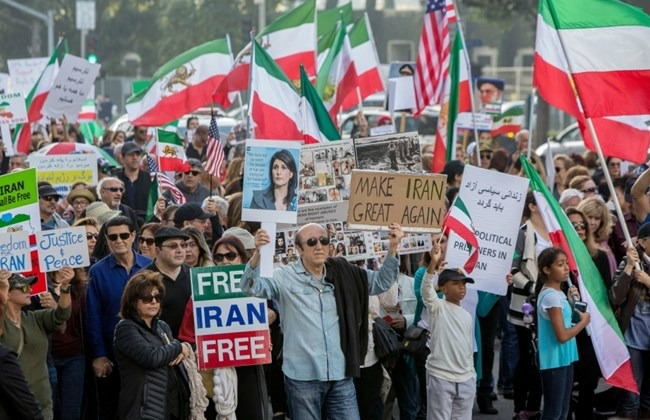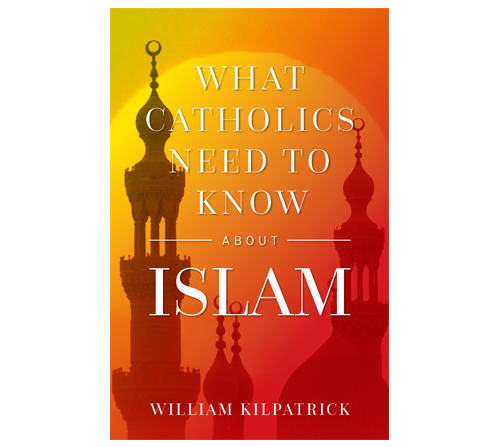Liberation theology, which was out of favor under John Paul II and Benedict XVI, seems to have made a comeback under Pope Francis. Francis has rehabilitated several liberation theologians and even appointed some to advisory positions. Meanwhile, high ranking prelates in the Middle East support Palestinian efforts to liberate themselves from the supposedly oppressive rule of Israel.
One would be mistaken, however, to think that this concern applies to all oppressed peoples. How many Church leaders are calling for Muslims to be liberated from the oppressive rule of Islam in Saudi Arabia, Sudan, Pakistan, Somalia, and elsewhere? In these places women have few rights and freedoms, children can be sold into marriage, cruel and unusual punishments are common, blasphemers can be jailed, and apostates can be executed. Needless to say, freedom of speech and freedom of religion are either non-existent or greatly curtailed.
In late December and early January the people of Iran took to the streets in a massive protest against just such a regime. Demonstrations took place in over 80 cities. Twenty of the protestors were killed and 4,000 were arrested. According to the mainstream media, the protests were over economic issues. But according to other sources, the dissatisfaction goes much deeper than that.
Some are saying that the dissatisfaction is with the Islamic regime itself. Hundreds of thousands have been heard shouting “We don’t want an Islamic Republic.” Another rallying cry is “Death to the Dictator”—a reference to supreme leader Ayatollah Khamenei. In many towns and cities protestors chanted “Clerics! Get lost,” and “Clerics … let go of our country.”
The protests raise several questions regarding the Church’s stance on Iran and on Islam in general. Although Church officials have been quick to condemn attacks on Muslims by non-Muslims, they have been slow to criticize Muslim acts of oppression and aggression. In the case of the Iranian protests there has been virtually no comment from the Vatican.
Why is that? Possibly because the Vatican is too heavily invested in the regime. As John Allen puts it in a recent Crux article:
There are few diplomatic relationships in which the Vatican has invested greater efforts in recent years than the one with Tehran, seeing it as fundamental not only to a series of thorny situations around the world … but also to a broader quest to avoid a much-feared “clash of civilizations.”
In addition, Iran has put a lot of effort into courting the Vatican. With the exception of the Dominican Republic, Iran has more diplomats accredited to its Vatican Embassy than any other country. Recently, writes Allen, there have been “clear signs of alignment between Rome and Tehran on matters large and small.” For one thing, he observes, “Francis and Iranian President Hassan Rouhani saw eye-to-eye … in denouncing the decision by Trump to transfer the American embassy in Israel from Tel Aviv to Jerusalem.”
Another thing about which the Vatican sees eye-to-eye with the Iranian regime is the nuclear deal. Although critics warned that the deal would make the world a more dangerous place, the Vatican strongly endorsed it. So did the United States Conference of Catholic Bishops. Bishop Oscar Cantu, Chair of the Committee on International Justice and Peace of the USCCB welcomed “the momentous agreement” which he described as a “significant achievement” and “a remarkable step.” In fact, in the months and years prior to the adoption of the Iran deal, Bishop Cantu and other American bishops lobbied repeatedly for its passage. In one letter to the House and Senate, Cantu criticized Congressional efforts to “undermine the negotiation process.”
But the deal and its aftermath was a main bone of contentions for the Iranian protestors. Many believed that the billions made available to Iran by the deal should have been used to improve the lives of Iranians. Instead the money was used to export the Iranian revolution throughout the Middle East. While millions in Iran sunk deeper into poverty, their government poured the money into conflicts in Syria, Yemen, and Iraq, and used it to enrich the coffers of fundamentalist religious foundations, the Islamic Revolutionary Guards, Hezbollah, and other terror groups. In short, the Iranian regime did everything that critics of the Iran deal predicted it would do once it laid hands on the cash.
Several observers see the protests as a rebuke of the Obama administration and its Munich-like deal with Iran. But if that’s so, then the protests must also be seen as a rebuke of the shortsighted policy of the Vatican and the American bishops. If anything, they were just as enthusiastic about the disastrous deal as the true believers in the Obama administration. One probable reason for the silence of the hierarchy over the Iranian protests is that if the protesters are right, the bishops have been decidedly wrong.
But the larger issue is not just that Church leaders are wrong about the Iran deal. The bigger problem is that they are wrong about Islam itself. With a few exceptions, the bishops have adopted a shockingly naïve view of Islam. Take this excerpt from the 2016 Joint Declaration between the USCCB and the Qom Seminary Scholars of Iran.
Christianity and Islam share a commitment to love and respect for the life, dignity, and welfare of all members of the human community. Both traditions reject transgressions and injustices as reprehensible, and oppose any actions that endanger the life, health, dignity, or welfare of others. We hold a common commitment to peaceful coexistence and mutual respect.
That’s typical of numerous Pollyannaish statements about Islam issued by Catholic bishops over the last five decades. It’s the kind of boilerplate generated by people who are vastly more interested in issuing declarations and arriving at agreements than in getting at the truth of things.
The protestors in Iran aren’t buying it anymore. If not a rejection of Islam itself, the protests are certainly a rejection of sharia law, of the oppression of women, of rule by clerics, of Islamic jihad, and of the revolution of 1979. “Commitment to love and respect for the life, dignity, and welfare of all members of the human community?” That’s not the Islam that Iranians have experienced for the last 39 years. And they can’t forget that they enjoyed far more freedoms under the Shah than under the clerics. Women, for example, were free to wear the hijab, or not, and most of them chose not to. Some protesters even chanted: “Reza Shah, bless your soul.” The media likes to portray Francis as a people’s pope, but the Vatican’s alignment with the Iranian regime, and its silence about the protests suggests that he and others at the Vatican are out of touch with the aspirations of the people of Iran.
One other element needs to be discussed. According to several sources, Iranian Muslims are converting to Christianity at an unprecedented pace. According to an article in the National Catholic Register, there are now three million Iranian Christians. Mohabat News (The Iranian Christian News Agency) reported that “Christianity has been growing at an exponential rate…” And, as Dr. Michael Brown has observed, the growth of Christianity in Iran “could well be playing an important role in the rising Iranian discontent.” That ought to give the Vatican one more reason to question its alignment with the regime in Tehran. Tens of thousands of Iranians are in prison. Many are there simply because they are Christian, and many have been tortured. As the Christian population grows and as the persecution continues, one wonders how much longer the Vatican will maintain its respectful silence.
The website of Reza Safa, formerly a Shiite Muslim, now an evangelical pastor, contains the following prediction:
Despite severe persecution by the Iranian government against underground churches, God’s Word is spreading like a wildfire all over Iran. Pastor Safa believes that Iran will be the first Islamic nation to convert to Christianity.
One has to wonder if Pope Francis would be pleased with the prospect of Iran becoming a Christian nation. He is so thoroughly committed to the pieties of the day concerning Islam that he might even balk at the idea. One can imagine him pondering the following questions: What would happen to the dialogue? What would be the effect on Middle East stability? Would it exacerbate the “clash of civilizations?” Wouldn’t it be better to keep the status quo? Do we have the right to proselytize non-Christians?
A group of “Former Muslims who became Catholics” is currently circulating an open letter to Pope Francis which will be presented as soon as enough signatures are acquired. The gist of the letter is that the Pope’s pro-Islam stance is confusing and misleading. At one point it asks: “If Islam is in itself a good religion, as you seem to teach, why did we become Catholic? Do not your words question the goodness of the choice we made … at the risk of our lives?” The letter ends with a request: “we ask your Holiness to confirm our conversion to Jesus Christ, true God and true man, only Savior, by a frank and right speech on Islam…”
In other words, “If one religion is as good as another, why have we risked our lives?” In still other words, “Whose side are you on?” The question, “Is the Pope Catholic?” used to be nothing more than a witty comeback. Now, as dreams of co-equal faith traditions, each a valid means of salvation, are becoming fashionable in elite Catholic circles, the question has become a bit more serious.
This article originally appeared in the January 24, 2018 edition of Crisis.
Photo credit: dailystar.com


